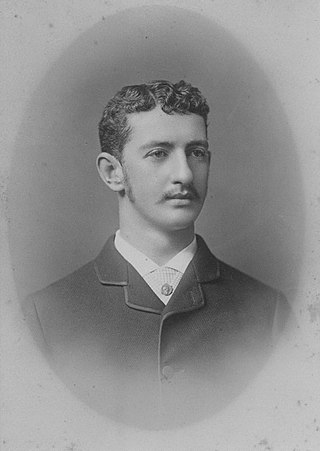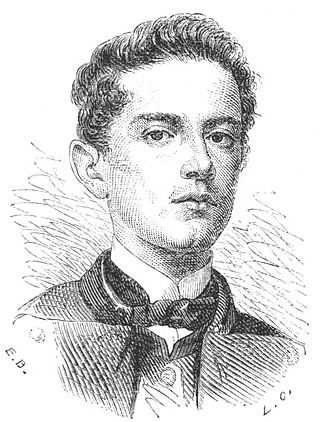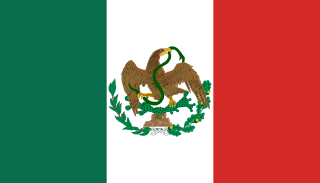Iturbide may refer to:
- Iturbide (surname)
- House of Iturbide, imperial house of Mexico
- Iturbide, Nuevo León
- Iturbide Bridge, a locale of the Tampico Affair
- Villa de Hidalgo, San Luis Potosí
Iturbide may refer to:
Iturbide is a Basque surname, original from the region of Navarra, a province located north of Spain, bordering with France. It is Basque for "Road of the fountain". Notable people with the surname include:

Agustín de Iturbide, full name Agustín Cosme Damián de Iturbide y Arámburu and also known as Agustín of Mexico, was a general in the Mexican army then a politician, becoming Emperor during the First Mexican Empire. During the country's war of independence, he built a successful political and military coalition that took control in Mexico City on 27 September 1821, decisively gaining independence for Mexico. After securing the secession of Mexico from Spain, Iturbide was proclaimed president of the Regency in 1821; a year later, he was proclaimed Emperor, reigning from 19 May 1822 to 19 March 1823. In May 1823 he went into exile in Europe. When he returned to Mexico in July 1824, he was arrested and executed. He designed the Mexican flag.

Agustín de Iturbide y Green was the grandson of Agustín de Iturbide, the first emperor of independent Mexico, and his consort Ana María Huarte.

Guadalupe Victoria, born José Miguel Ramón Adaucto Fernández y Félix, was a Mexican general and political leader who fought for independence against the Spanish Empire in the Mexican War of Independence. He was a deputy in the Mexican Chamber of Deputies for Durango and a member of the Supreme Executive Power following the downfall of the First Mexican Empire. After the adoption of the Constitution of 1824, Victoria was elected as the first president of the United Mexican States.
Mexican Empire may refer to:

The Mexican Empire was a constitutional monarchy, the first independent government of Mexico and the only former colony of the Spanish Empire to establish a monarchy after independence. It is one of the few modern-era, independent monarchies that have existed in the Americas, along with the Brazilian Empire. It is typically denominated as the First Mexican Empire to distinguish it from the Second Mexican Empire.

The Emperor of Mexico was the head of state and ruler of Mexico on two non-consecutive occasions in the 19th century.

The Treaty of Córdoba established Mexican independence from Spain at the conclusion of the Mexican War of Independence. It was signed on August 24, 1821 in Córdoba, Veracruz, Mexico. The signatories were the head of the Army of the Three Guarantees, Agustín de Iturbide, and, acting on behalf of the Spanish government, Jefe Político Superior Juan O'Donojú. The treaty has 17 articles, which developed the proposals of the Plan of Iguala. The Treaty is the first document in which Spanish and Mexican officials accept the liberty of what will become the First Mexican Empire, but it is not today recognized as the foundational moment, since these ideas are often attributed to the Grito de Dolores. The treaty was rejected by the Spanish government, publishing this determination in Madrid on February 13 and 14, 1822.

Graciela Iturbide is a Mexican photographer. Her work has been exhibited internationally, and is included in many major museum collections such as the San Francisco Museum of Modern Art and The J. Paul Getty Museum.

Salvador Agustín Francisco de Paula de Iturbide y Marzán was the grandson of Agustín de Iturbide, the first emperor of independent Mexico, and his consort Empress Ana María. He became the adopted son, along with his cousin Agustín de Iturbide y Green, of Mexico's only other imperial heads of state—Emperor Maximilian I and Empress Carlota of Mexico.

María Josepha Sophia de Iturbide was the head of the Imperial House of Mexico from 1925 to 1949. A modest and very religious lady, she played no political role whatsoever. She married twice and had two daughters.

Agustín Jerónimo de Iturbide y Huarte was the eldest son of the first Emperor of Mexico, Agustín I of Mexico. He was the heir apparent to the First Mexican Empire and a member of the Imperial House of Iturbide. Later in life, he served as a military officer in South America and also worked as a diplomat for the United Mexican States at the Mexican embassy in the United States and in London, after his military career had ended in South America.

The House of Iturbide is a former Imperial House of Mexico. It was founded by the Sovereign Mexican Constituent Congress on 22 June 1822 when the newly independent Mexican congress confirmed Agustín I's title of Constitutional Emperor of Mexico. He was baptized with the names of Saints Cosmas and Damian at the cathedral there. The last name Iturbide was originally from the Basque Country, Spain.
Juana de Dios María Francisca Ramona Ignacia de Iturbide y Huarte, was the third child of Agustín I of Mexico and Empress Ana María. She died at a young age at the Georgetown Visitation Monastery in Washington, D.C.

The Palace of Iturbide is a large palatial residence located in the historic center of Mexico City at Madero Street #17. It was built by the Count of San Mateo Valparaíso as a wedding gift for his daughter. It gained the name “Palace of Iturbide” because Agustín de Iturbide lived there and accepted the crown of the First Mexican Empire at the palace after independence from Spain. Today, the restored building houses the Fomento Cultural Banamex; it has been renamed the Palacio de Cultura Banamex.

Ana María Josefa Ramona Juana Nepomucena Marcelina Huarte y Muñiz was the first Empress of Mexico. Noted for her beauty, grace and education, she married Agustín de Iturbide who ruled briefly as Emperor in 1822-23, before being exiled by the short-lived provisional government. Tempted back to Mexico to regain power, he was arrested and executed. The Empress lived out her widowhood mostly in the United States.

The Supreme Executive Power was the provisional government of Mexico that governed between the fall of the First Mexican Empire in April 1823 and the election of the first Mexican president, Guadalupe Victoria, in October 1824. After Emperor Iturbide abdicated, the sovereignty of the nation passed over to Congress, which appointed a triumvirate, made up of Guadalupe Victoria, Pedro Celestino Negrete, and Nicolas Bravo, to serve as the executive, while a new constitution was being written.
Maximilian Gustav Albrecht Richard Augustin Graf von Götzen-Iturbide is a Hungarian-born businessman and head of the Imperial House of Mexico since 1949.
Prince of Mexico may refer to:
The First Mexican Empire, established in 1821, with Agustín de Iturbide proclaimed as Emperor in 1822, was abolished in 1823.